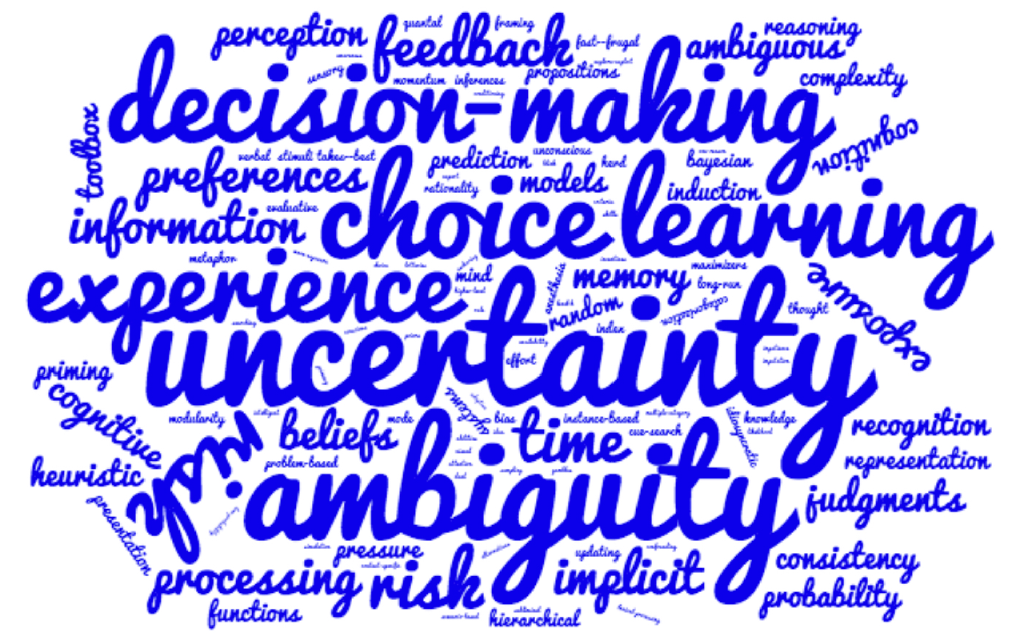I am very pleased to announce the publication of my latest paper, “Increasing worker motivation using a reward scheme with probabilistic elements” in the journal Organizational Behavior and Human Decision Processes. This is a joint paper with Katarina Dankova, Jose Ortiz (“Nano!”), and Ananta Neelim.
The paper came into existence in 2016 when the RMIT Behavioural Business Lab (BBL), of which both Ananta and I were members, organised a workshop in Barcelona “… to generate new behavioural research projects between BBL members and European-based collaborators. Guess what, Katarina and Nano were at the workshop. And they were European!
Essentially, what we had organised was a dialogical conference: traditional conferences divide the participants into speakers and listeners, while a dialogical conference requires all participants to be both…
Each BBL member took a topic to lead. I was in charge of “Topic 5: Cognition, Perception and Information”. Here’s the word cloud that accompanied my topic:

By the end of the day, an idea emerged related to motivating workers via probabilistic rewards. Attendees could choose which idea they wanted to pursue on Day 2. It was the start of a long journey.
Nearly 7 years later, this is what we ended up with:
The purpose of this research was to investigate the effectiveness of a probabilistic reward scheme to motivate workers and increase their performance. Across seven experiments (three of which are in the online appendices) testing three different real effort tasks, we compared two novel probabilistic reward schemes with two traditional non-probabilistic reward schemes. In our flagship “single lottery” probabilistic scheme, worker performance was associated with the accumulation of lottery tickets in the worker’s own personal lottery with a moderate jackpot on offer. It was possible for the worker to accumulate all tickets and thus guarantee the jackpot. We found that the single lottery scheme increased motivation and performance relative to other probabilistic and non-probabilistic schemes with the same expected values. There was also evidence that the single lottery scheme was particularly effective for lower-ability workers relative to the non-probabilistic schemes. We argue that the single lottery scheme uniquely benefited from optimism bias and the goal gradient effect. Considering perceptions of (un)fairness associated with probabilistic reward schemes – at least at first – we discuss what labor contexts are appropriate for the introduction of a probabilistic reward scheme.
